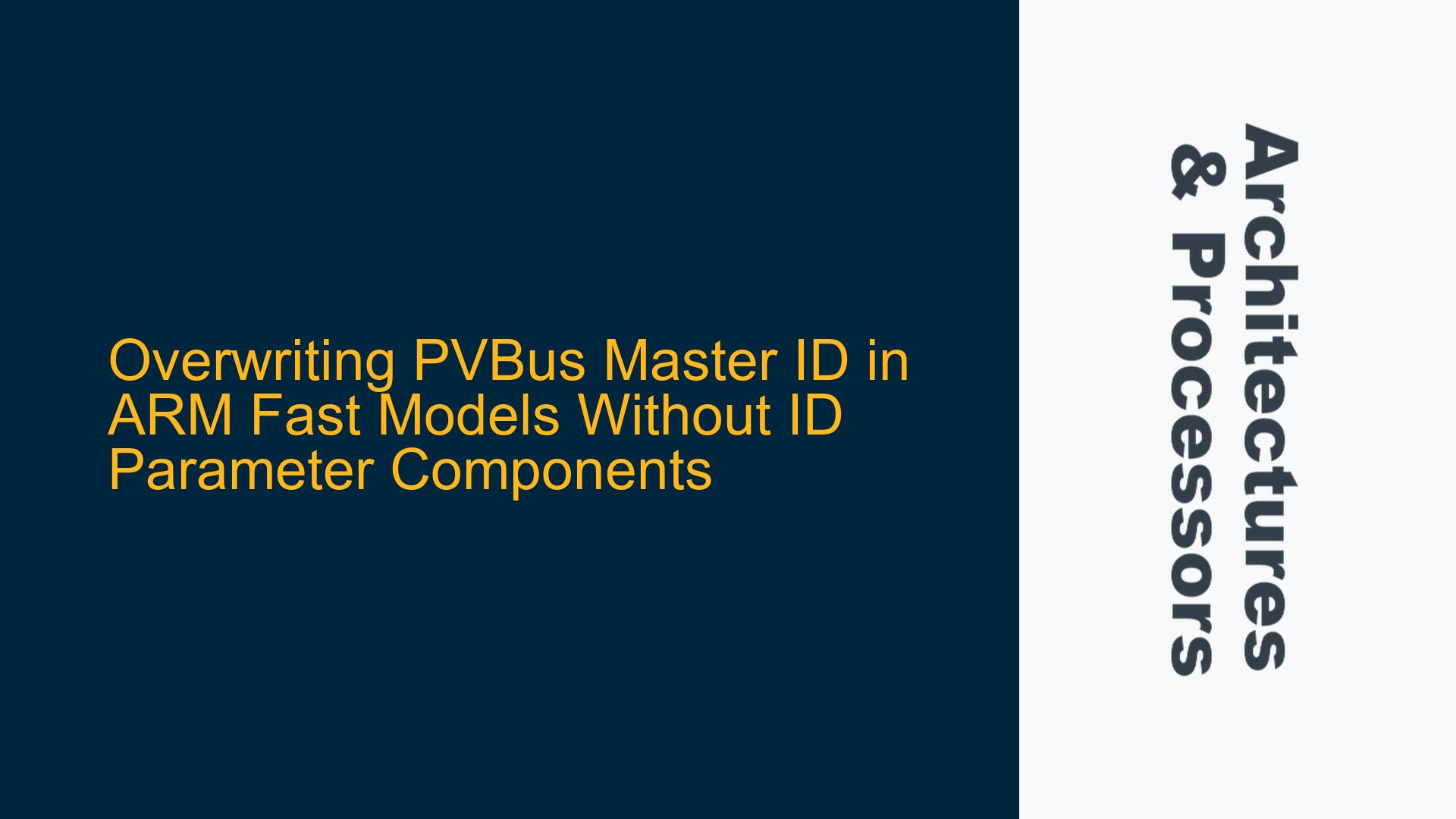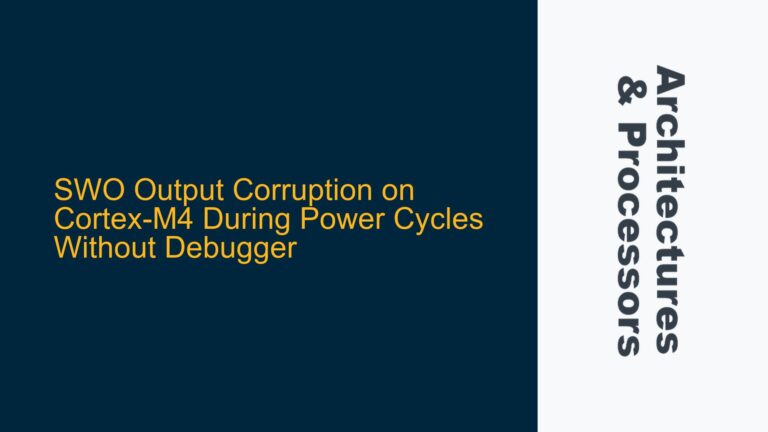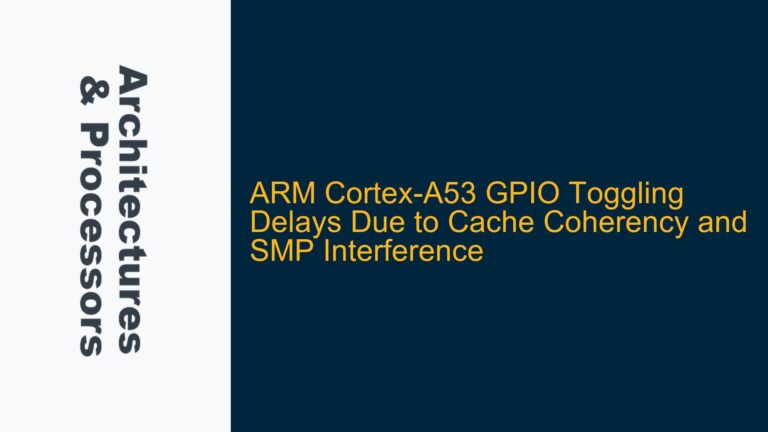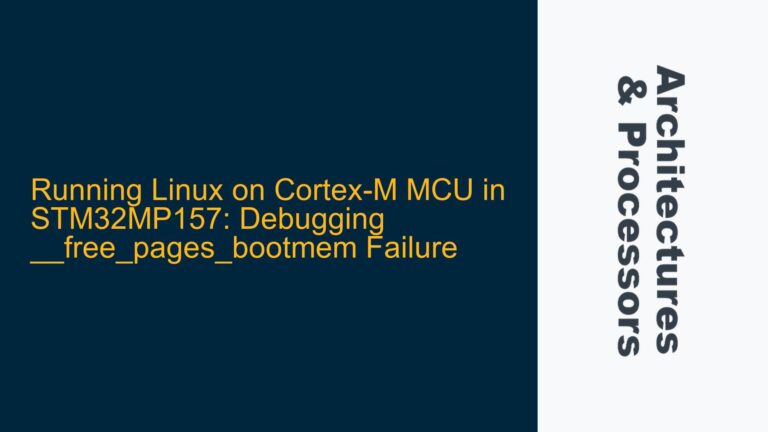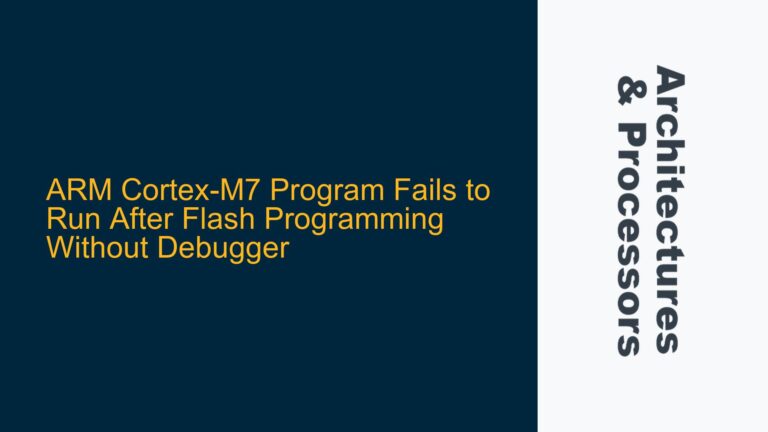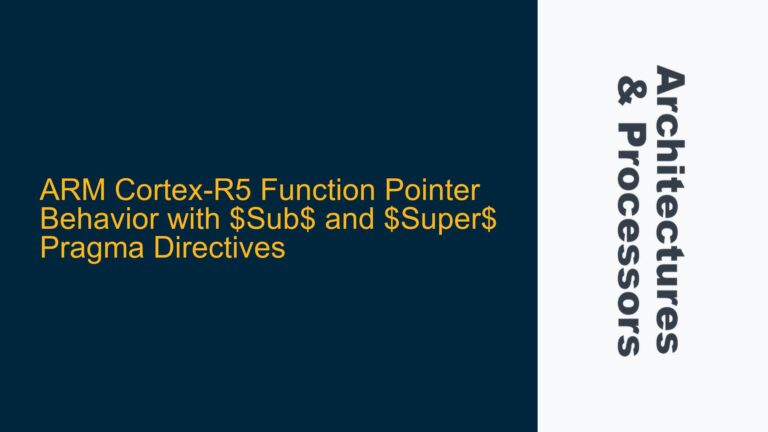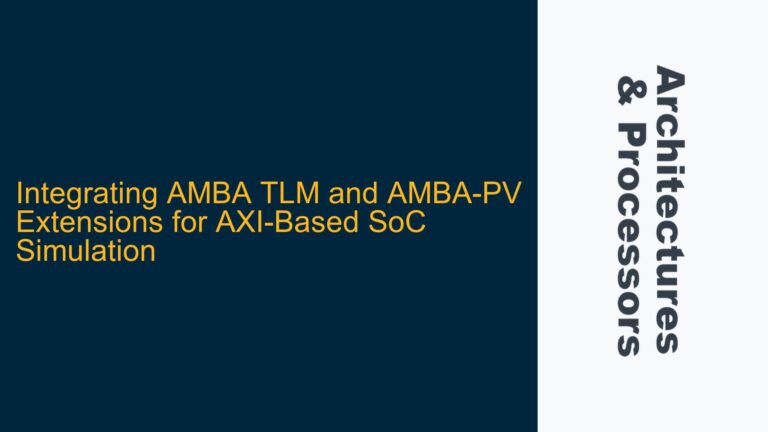PVBus Master ID Overwrite Requirement for GIC-400 Banked Registers
In ARM-based SoC designs, the Generic Interrupt Controller (GIC-400) often requires banked registers to handle interrupts from multiple processors or clusters. Each processor or cluster typically has a unique master ID that is used to access its respective banked registers in the GIC-400. However, there are scenarios where a bridge or intermediary module, such as a CPU_SEL module, needs to dynamically overwrite the PVBus master ID to correctly route transactions to the appropriate banked registers in the GIC-400.
The PVBus protocol, used in ARM Fast Models, encapsulates transactions with a master ID that identifies the source of the transaction. This master ID is crucial for the GIC-400 to determine which banked registers to access. In some cases, the master ID needs to be overwritten by an intermediary module to ensure that the transaction is correctly routed. This is particularly important in systems where multiple processors or clusters share a common GIC-400 but require separate banked registers.
The challenge arises when the intermediary module, such as the CPU_SEL module, needs to overwrite the PVBus master ID without relying on components that have an explicit ID parameter (e.g., master_id, cluster_id). This requirement is often driven by the need for flexibility and programmability in the system, where the master ID may need to be changed dynamically based on runtime conditions.
Limitations of PVBus Master ID Overwrite Without ID Parameters
The primary limitation in overwriting the PVBus master ID without using components that have an ID parameter is the lack of direct control over the PVBus transaction attributes. PVBus transactions are typically generated by master components, such as CPUs or DMA controllers, and the master ID is embedded within the transaction. Without access to components that explicitly allow for the modification of the master ID, it becomes challenging to intercept and modify these transactions.
Another limitation is the potential impact on the PVBus cache. The PVBus protocol employs a caching mechanism to optimize transaction handling. When a master ID is overwritten, it is essential to ensure that the PVBus cache is updated accordingly to reflect the new master ID. Failure to do so can result in incorrect transaction routing or stale data being accessed, leading to system-level issues.
Additionally, the absence of a programmable interface in the intermediary module further complicates the task. A programmable interface is necessary to allow runtime configuration of the master ID, which is essential for dynamic systems where the master ID may need to be changed based on operational requirements.
Implementing a Programmable PVBus Master ID Overwrite Mechanism
To address the challenge of overwriting the PVBus master ID without relying on components with explicit ID parameters, a programmable intermediary module, such as the CPU_SEL module, can be implemented. This module should include a device interface, a register for storing the master ID, and logic to modify the PVBus transaction attributes.
Device Interface and Register Definition
The first step in implementing the CPU_SEL module is to define a device interface that allows the module to be programmed with the desired master ID. This interface should include a register that can be written by software to set the master ID. The register should be accessible through the system’s memory map, allowing software to update the master ID as needed.
The register definition should include fields for the master ID and any additional control bits that may be required for the module’s operation. For example, a control bit could be used to enable or disable the master ID overwrite functionality, providing flexibility in the module’s operation.
PVBus Transaction Interception and Modification
Once the device interface and register are defined, the next step is to implement logic within the CPU_SEL module to intercept PVBus transactions and modify the master ID. This logic should monitor incoming PVBus transactions and replace the master ID with the value stored in the register.
To achieve this, the CPU_SEL module should include a PVBus slave interface to receive transactions from the master components and a PVBus master interface to forward the modified transactions to the GIC-400. The module should also include logic to handle the PVBus protocol signals, such as address, data, and control signals, to ensure that the modified transactions are correctly routed.
PVBus Cache Management
An essential aspect of overwriting the PVBus master ID is managing the PVBus cache to ensure that the new master ID is correctly reflected in the cache. The PVBus cache is used to optimize transaction handling, and any changes to the master ID must be propagated to the cache to avoid incorrect transaction routing or stale data access.
To manage the PVBus cache, the CPU_SEL module should include logic to issue a remap decision when the master ID is changed. A remap decision is a mechanism in the PVBus protocol that informs the cache of changes to transaction attributes, such as the master ID. By issuing a remap decision, the CPU_SEL module ensures that the PVBus cache is updated with the new master ID, preventing any potential issues related to stale cache entries.
Example Implementation
The following example illustrates the implementation of the CPU_SEL module in SystemVerilog:
module cpu_sel (
input logic clk,
input logic resetn,
input logic pvbus_slave_valid,
input logic [31:0] pvbus_slave_addr,
input logic [31:0] pvbus_slave_data,
input logic pvbus_slave_write,
output logic pvbus_slave_ready,
output logic pvbus_master_valid,
output logic [31:0] pvbus_master_addr,
output logic [31:0] pvbus_master_data,
output logic pvbus_master_write,
input logic pvbus_master_ready,
input logic reg_write,
input logic [31:0] reg_wdata,
output logic [31:0] reg_rdata
);
logic [7:0] master_id_reg; // Register to store the master ID
// Register write logic
always_ff @(posedge clk or negedge resetn) begin
if (!resetn) begin
master_id_reg <= 8'h00;
end else if (reg_write) begin
master_id_reg <= reg_wdata[7:0];
end
end
// PVBus transaction interception and modification
always_comb begin
pvbus_master_valid = pvbus_slave_valid;
pvbus_master_addr = pvbus_slave_addr;
pvbus_master_data = pvbus_slave_data;
pvbus_master_write = pvbus_slave_write;
pvbus_slave_ready = pvbus_master_ready;
// Overwrite the master ID in the PVBus transaction
if (pvbus_slave_valid) begin
pvbus_master_data[15:8] = master_id_reg;
end
end
// PVBus cache management
logic remap_decision;
assign remap_decision = reg_write; // Issue remap decision when master ID is changed
// Remap decision logic
always_ff @(posedge clk or negedge resetn) begin
if (!resetn) begin
remap_decision <= 1'b0;
end else if (reg_write) begin
remap_decision <= 1'b1;
end else begin
remap_decision <= 1'b0;
end
end
endmodule
In this example, the CPU_SEL module includes a register (master_id_reg) to store the master ID, which can be written by software through the reg_write and reg_wdata signals. The module intercepts PVBus transactions and modifies the master ID in the transaction data before forwarding it to the GIC-400. The module also issues a remap decision when the master ID is changed to ensure that the PVBus cache is updated accordingly.
Verification Strategy
To verify the functionality of the CPU_SEL module, a comprehensive verification strategy should be employed. This strategy should include both unit-level and system-level tests to ensure that the module correctly overwrites the PVBus master ID and manages the PVBus cache.
Unit-Level Verification
Unit-level verification should focus on testing the individual components of the CPU_SEL module, including the register interface, PVBus transaction modification logic, and PVBus cache management logic. Test cases should cover various scenarios, such as:
- Writing different values to the master ID register and verifying that the register is updated correctly.
- Intercepting PVBus transactions and verifying that the master ID is correctly overwritten.
- Issuing remap decisions and verifying that the PVBus cache is updated accordingly.
System-Level Verification
System-level verification should focus on testing the CPU_SEL module in the context of the entire system, including the GIC-400 and other system components. Test cases should cover scenarios such as:
- Routing transactions from multiple processors or clusters through the CPU_SEL module and verifying that the correct banked registers in the GIC-400 are accessed.
- Dynamically changing the master ID and verifying that the system correctly handles the change.
- Verifying that the PVBus cache is correctly managed when the master ID is changed.
Conclusion
Overwriting the PVBus master ID in ARM Fast Models without using components that have explicit ID parameters is a challenging task that requires a programmable intermediary module, such as the CPU_SEL module. By implementing a device interface, a register for storing the master ID, and logic to modify PVBus transactions and manage the PVBus cache, it is possible to achieve the desired functionality. A comprehensive verification strategy, including both unit-level and system-level tests, is essential to ensure that the module operates correctly in the context of the entire system.
